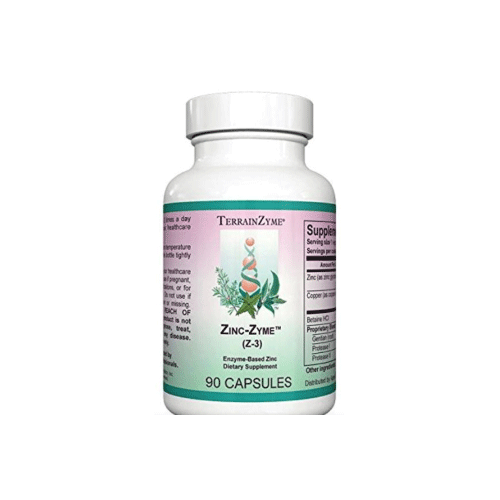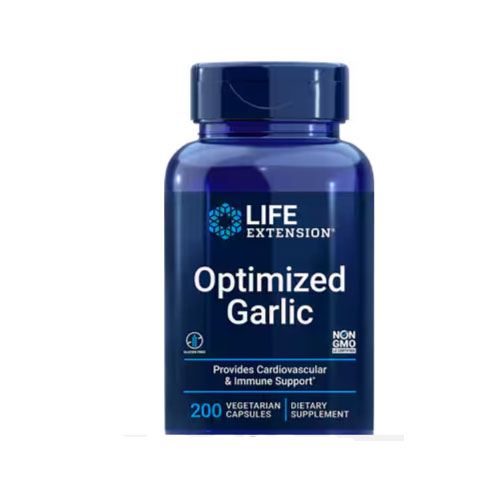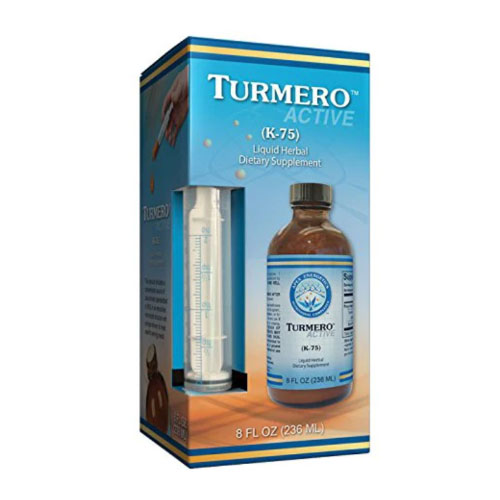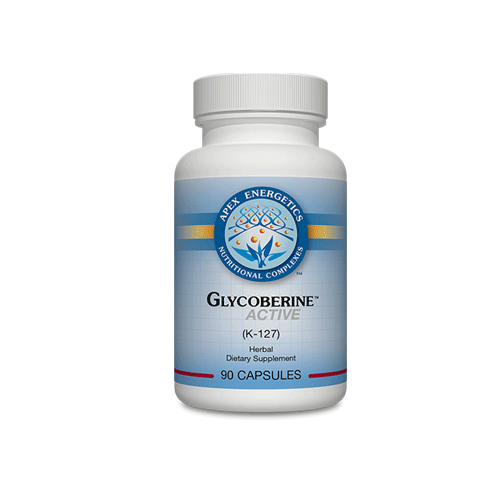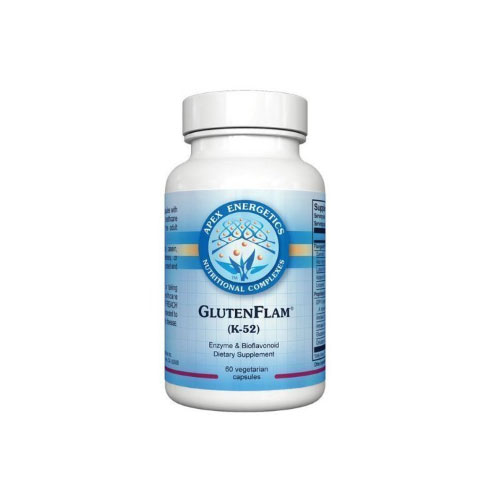By Michael Gerber, MD, HMD
Hormone Myths vs. Scientific Evidence
Making the Case for Bioidentical Hormone Replacement as the “Standard of Care”
William Clearfield. D.O.
Reno, NV
We are very pleased to have Dr. Clearfield join our community of integrative physicians in Reno, NV. He is a graduate of the College of Osteopathic Medicine and Surgery in Des Moines, Iowa in 1978 and is a native of Pennsylvania with an extensive background in Medical Acupuncture from UCLA and Diplomat of the American Board of Medical Acupuncture as well as the American Board of Family Practice and American Board of Anti-Aging/Regenerative Medicine.
Dr. Clearfield presented three lectures for us. Battlefield Acupuncture, Rapid Auriculotherapy Technique for Pain Reduction, Thyroid Optimization and the Case for Bioidentical Hormones. All of his lectures were excellent and in keeping with the TL February theme. I will review his Bioidentical lecture.Because of the extensive nature of his documentation on these themes I strongly recommend you get a high quality video of the lecture from us. nevadahomeopathy@gmail.com.
Myth: “No Credible Evidence Exists on the Value of Bioidentical Hormones.”
- Current evidence does not support the use of testosterone in older men with low testosterone levels.
- Evidence of the value of testosterone as an antiaging therapy does not exist.
- Current evidence fails to support the efficacy of hGH as an anti-aging therapy.
- The long term use of estrogens with or without progestins causes more risks than benefits.
- DHEA as an antiaging supplement shows neither meaningful benefit nor serious adverse effects.
- No evidence of long term changes in therapeutic dose of “anti-aging hormones”.
From the Executive summary of the AMA House of Delegates 2009 Annual Meeting Council on Science and the Public Health Report. The use of hormones for “anti-aging”: A review of efficacy and safety.
Mayo Clinic
No evidence currently suggests that custom CBHT formulations offer clinically relevant benefits1. Mao Clin Proc.2011.
Auburn University School of Pharmacy
Pharmacists compounding bioidentical hormone therapy are ill informed regarding the lack of scientific underpinning associated with the efficacy and safety of the practice of bioidentical hormone therapy.
Most medical organizations have in essence refuted the bioidentical hormone therapy claims as nsubstantiated2.Curr Opin Obstet Gynecol 2008.
American Association of Clinical Endocrinologists
For women who cannot control severe vasomotor symptoms. Lifestyle changes should be implemented first3.
Pharmacologic therapy.
- Antidepressants Venlafaxine (Effexor)
- Antidepressants intolerant
- Clonidine (Catapress)
- Megestrol (Synthetic Progesterone)
- Gabapentin
Endocrine Pract 2011
American Association of Clinical Endocrinologists
- Serum thyrotropin (TSH)) is single best screening test for primary thyroid dysfunction for the vast majority of outpatient clinical situations.
- Standard treatment is replacement with levothyroxine. The decision to treat subclinical hypothyroidism should be tailored to the individual patient.
Any Treatment Other Than T4 (i.e. “Synthroid or generic equivalent) is Outside Realm of Medicine4.
American Association of Clinical Endocrinologists
- There is no evidence to support using desiccated (natural) thyroid hormone in preference to L-thyroxine monotherapy in the treatment of hypothyroidism.
- Desiccated thyroid hormone should not be used for the treatment of hypothyroidism.
- Desiccated thyroid Recommendation 22.4 was a
Unanimous Expert Opinion5
Dr. Clearfield Rebuts These Myths
Negative Influences Preventing Conversion ofT4 to T3
Factors influencing the conversion of T4 to T3 include advanced age, excessive goiterogen consumption, gluten sensitivity, infectious disease, adrenal insufficiency, iodine deficiency, stress, medications, chemotherapy or radiation exposure, toxin exposure, extremeexercise, inflammation, low iron and low testosterone. I like to remember that there are no T4 receptors in the human body only T3.
Desiccated Thyroid Hormone Replacement
When 50 mcg of T4 were replaced by 12.5 mcg of T3 cognitive performance, mood and depressions improved with no adverse effects with the combination.
In a double blind crossover study of a porcine thyroid extract vs. levothyroxine the authors concluded that the desiccated extract caused more weight loss and 50% felt better on the desiccated thyroid extract. Conversion factor for =TSH found in this study: 100 mcg T4 = 88 mg of thyroid extract6, 7.
Desiccated thyroid replacement and brain function studies showed improved memory, cognitive function, and decreased neurodegenerative diseases including dementia and improved mood and schizo-affective disorders8, 9.
Desiccated Thyroid Replacement and Heart Disease
Desiccated thyroid replacement lowers blood pressure and improves cholesterol 10, metabolic syndrome and insulin resistance11. Optimizing thyroidimproves lipids, CHF, homocysteine, arterial stiffness and endothelial dysfunction12. After heart attacks it normalizes the QT interval and improves CRP. Low T3 is the strongest independent predictor of cardiac death13.
Dr. Mark Star reminds us in his letter to the editor to TLin Aug/Sept 2013 of the mountain of evidence from Dr. Broda Barnes, MD, Ph.D. in his book Hypothyroidism, the Unsuspected Illness published in 1976. His 22 year study with 1569 patients who took desiccated thyroid for a minimum of two years to be included in in the study. When compared to the Framingham study his patients should have had 72 heart attacks, only 4 occurred. In my column in that same issue I cited 119 scientific articles gleaned from Dr. Kent Holtorf’s publications showing that TSH and T4 levels were very poor predictors of thyroid sufficiency.
Myth: Current evidence does not support the use of testosterone in older men with low testosterone levels14.
Facts: Testosterone and Heart Disease
Low testosterone levels are associated with increased mortality, atherosclerosis, and incident coronary artery disease.
Mortality is reduced by one half in testosterone-deficient men treated with testosterone therapy compared with untreated men.
Exercise capacity is increased with testosterone treatment vs placebo in men with known heart disease (angina, heart failure).
There is uniform improvement in CV risk factors (fat mass, waist circumference, insulin resistance) with testosterone therapy vs placebo15.
Testosterone andHeart Disease Study Retracted
“People find it hard to believe that JAMA would publish a study in which the percentages of men who suffered an adverse event was lower by half in men who received testosterone than untreated men, yet results were reported as if the opposite were true” writesAndre Grey, Prof. of Endocrinology Tufts University. The Vigen article15was also condemned by 160 leading testosterone researchers and 29 medical societies from around the world calling for retraction of the study following revelation of the data errors, asserting that the magnitude and quality of the errors rendered the study “no longer credible”. The study also included 100 women.
Myth: Testosterone Causes Prostate Cancer
This myth was based on one report from 1941. The authors found no relationship of testosterone, DHT or estradiol to prostate cancer. There were no reports of prostate cancer in men treated with testosterone after radical prostatectomy and there were benefits from head to toe when hypogonadism was treated16. In a study of 1023 patients with up to 17 years testosterone hormone replacement therapy there was no increase in the risk of prostate cancer17. Testosterone replacement therapy appears to have little effect on prostate tissue androgen levels and cellular function and causes no significant adverse effects on increasing prostate cancer risk or benign prostatic hyperplasia. In fact it should be recognized that prostate cancer becomes more prevalent exactly at the time in a man’s life when testosterone levels decline18, 19,20.
Myth: Testosterone Causes “Roid Rage”
Reality Higher testosterone men are more sociable and gregarious, had more energy and showed less aggression21, 22.
Testosterone has antidepressant effects in depressed patients, especially those with hypogonadism and also produces significant gains in lean mass, strength and aerobic endurance with significant reductions in whole body and trunk fat in older men23.
Myth: “Current evidence fails to support the efficacy of hGH as an anti-aging therapy”
GH therapy of GH deficient men reverses an early atherosclerotic change, namely, the increased thickness of the intima media of the common carotid artery and the carotid bifurcation in 11 GH deficient men24. It decreased oxidative stress by 50% 25 and increases thyroid and androgen activities, but decreases cortisol26.
All mortality with GH use decreased post MI by minimum 300%27.
GH supplementation improves quality of life, nutrition and cardiovascular risk during hemodialysis in a randomized trial28.
HGH administered vs. Placebo. Twelve men with IGF-1 values <350 were given .03 mg of biosynthetic HGH per kilogram of body weight SQ 3x/wk. They had and 8.8% increase in lean body mass, 14.4 % decrease in adipose tissue mass, 1.6 % increase in average lumbar vertebral bone density and 7.1 % increase in skin thickness. The non-treatment group had no significant change29.
Myth: The long term use of estrogens with or without progestins cause more risks than benefits.
2002 WHI Study—“HRT” is Dangerous!
Premarin (conjugated equine estrogens) alone given to older postmenopausal women caused adverse effects in the first year (strokes, blood clots)
Oral estrogens cause blood clots, transdermal estradiol does not. Adding Provera, medroxyprogesterone acetate, (Prempro) caused more adverse effects (breast cancers, heart attacks, and dementia). Provera increases breast cancer and vascular inflammation, progesterone does neither. Thousands of lawsuits are pending: drug companies are running a legal-protection propaganda campaign to paint all “hormones” as equally dangerous!
Myth: Estrogen Causes Cancer
Ten thousand women took estrogen therapy for a year and only 8 more cases of breast cancer per year. If hormones cause cancer, why don’t young women who produce large quantities of estrogen and progesterone, on average, get cancer?
In a study of 80,377 postmenopausal women showed no increase or decrease in breast cancer in women on estradiol and progesterone. Estradiol plus medroxyprogesterone acetate had a 69% increased risk of breast cancer. Progestins are not progesterone30.
In the E3N-EPIC Study of 55,000 women with an 8 year follow up showed that transdermal estradiol alone increased breast cancer risk by 1.2%, estradiol plus progesterone decreased risk to .9% and estradiol plus progestins increased risk to 1.4% 31.
Estradiol Restoration
- Protects against heart disease, dementia and osteoporosis.
- Improves insulin sensitivity—prevents diabetes.
- Eliminates hot flashes, restores sleep.
- Restores cognitive function and mood
- Maintains thickness, fullness of skin and hair.
- Maintains genital/pelvic health-helps with vaginal lubrication, incontinence and bladder infections.
- Protects against colon cancer and macular degeneration.
- Prevents the oxidation of LDL
- Improves lipid profile
- Reduces lipoprotein (a)
- Improves endothelial function
- Reduces plaque formation
- improves insulin sensitivity
Myth: Estradiol Replacement Increases Risk of Clots
Transdermal estradiol does not increase risk of venous thromboembolism like oral estradiol and is cardio protective with decreased risk of heart attack and type 2 diabetes. Micronized progesterone reduces risk of type 2 diabetes and does not increase risk for venous thromboembolism and reduces blood pressure.
Internal carotid artery lumen widens by 22.4% when patients administered estradiol >6 months32, 33.
Benefits of estradiol plus progesterone (natural) therapy is safe and effective in young postmenopausal women. It counteracts climacteric symptoms, osteoporotic fractures, diabetes, prevents long-term degenerative diseases and cognitive impairment. Natural progesterone has a positive cognitive effect and no increase in breast cancer. Transdermal estrogen and natural progesterone have significant advantages34.
Estrogen Dominance
- Allergies
- Heavy periods
- Autoimmune diseases
- Endometriosis
- Anxiety, moodiness
- Breast cancer
- PMS
- Ovarian cancer
- Bloating, fluid retention
- Uterine cancer
- Fibrocystic breasts* Gallstones
Progesterone is the only effective treatment for estrogen dominance.
Progesterone vs. Breast Cancer
- Progesterone cream applied to the breast reduces proliferation 35, 36, 37.
- Estradiol is carcinogenic in breast cell cultures unless progesterone is present38.
- Normal breast cells proliferate after estradiol treatment, but become quiescent when progesterone is added39.
- Estradiol upregulates cancer-promoting gene bcl-2, progesterone downregulates it40.
Progesterone and Stroke
- Progesterone inhibits ischemic brain injury.
- Progesterone reduces infarct volume and improves functional deficits following cerebral ischemic event.
- Dose: 8 mg/kg progesterone gave the best clinical results41, 42,43.
Fact: Patent Drugs Are Not Equivalent to Human Hormones.
Patent drugs are not human hormones. Synthetic estrogens are not estrogen and progestogens are not progesterone. Hormones are not drugs.
Conventional HRT is really HST: hormone substitution therapy! Estradiol substitutes: conjugated equine estrogens (CEE=Premarin) and ethinyl estradiol (in birth control pills —all are called “estrogen”. Progesterone substitutes: medroxyprogesterone acetate (MPA – Provera) and 30+ other “progestins” – all are called “progesterone. Testosterone substitute: methyltestosterone is also a patented drug and not a human hormone. Most docs don’t know the difference! Human hormones cannot be patented, no profits.
Oral Estrogens are Dangerous
First-pass effect on the liver increases CRP, increases clotting factors, blood clots, strokes, heart attacks in the first year. Transdermal estradiol mimics normal production and does not increase blood clotting44.
Ethinyl estradiol in birth control pills cannot be inactivated by normal oxidation, does not interact with estrogen receptorBeta and is 12,000-60,000 times more potent than estradiol. Ethinyl estradiol is thrombogenic with a twofold increased risk of deep vein thrombosis and pulmonary emboli.
Conjugated equine estrogens contain at least 10 estrogens, only three are human; also contain horse androgens and progestins45.
Provera vs. Progesterone Scientific studies show that:
Provera
- Causes birth defects.
- Can cause depression
- Insomnia, irritability
- Fluid retention
- Raises blood sugar
- Counteracts estrogen induced
- arterial dilation
- Worsens lipid profile
- Causes heart attacks
- Increases estrogenic
- Stimulation of breasts
- Causes breast cancer
Progesterone
- Maintains pregnancy
- Improves mood
- Improves sleep
- Diuretic
- No effect on blood sugar
- Maintains estrogen induced arterial dilation
- Improves lipid profile
- No increase in CVD
- Reduces estrogenic stimulation of breasts.
- Prevents breast cancer
Myth: Testosterone is for Males Only
Testosterone is the most abundant active sex steroid in women throughout the female lifespan46. It helps maintain muscle and bone strength, restores sex drive and libido, improves overall feeling of wellbeing, and reduces “bad” cholesterol. Testosterone deficiency leads to dry eyes, pale faces and thinning of inner 1/3 of eyebrows.
Testosterone is essential for women’s physical and mental health and wellbeing. Androgen deficiency in pre and post-menopausal women, and aging men can manifest as dysphoric mood (anxiety, irritability, and depression), sexual dysfunction, urinary complaints, incontinence, physical fatigue, hot flashes, rheumatoid complaints, pain, breast pain, bone loss, muscle loss and changes in cognition, memory loss and insomnia47.
More Myths: Testosterone and Women
- Myth: Testosteronemasculinizes females. Fact: Testosterone does not have a masculinizingeffect on females48.
- Myth: Testosterone causes hoarseness and voice changes. Fact:There is no evidence that testosterone causes hoarseness or irreversible vocal chord changes in women49.
- Myth: Testosterone causes hair loss. Fact: Testosterone increases hair growth in women50.
- Myth: Testosterone causes liver damage. Fact: Non oral testosterone does not adversely affect the liver or clotting factors51.
- Myth: Testosterone replacement increases the risk of breast cancer. Fact: In a study of 1268 pre and post-menopausal women given testosterone treatment the control group without testosterone had more than double the risk of breast cancer52.
Myth: DHEA as an Antiaging Supplement Shows neither Meaningful Benefit nor Serious Adverse Effects
Fact: DHEA protects against cortisol catabolism and decreases visceral and subcutaneous fat in elderly persons. It reduced LDL and improved bone density. Supplementation relieved fatigue, dry eyes and skin. It has been shown to regulate mood, supports the immune system and improves insulin sensitivity53, 54.
DHEA reduces atherosclerotic plaques; inhibits platelet aggregation (similar to aspirin), inhibits free radical formation and nuclear factor kappa B dependent transcription. It improves sexual function, skin tone and vulvar vaginal atrophy in post menopause with no systemic effects55, 56, 57, 58.
Low levels of DHEA are associated with all-cause mortality, cardiovascular mortality, immune dysfunction, autoimmune disease, cancer, hypertension, cardiovascular disease, depression and loss of well-being, low libido, erectile dysfunction and osteoporosis59. DHEA at 50 mg per day increase testosterone (60%) and estrogen (40%) in women, not men with no adverse effects60. 7 Keto DHEA gives weight loss without side effects (Kalman), improves immune function and is useful in Raynaud’s and autoimmune diseases61.
Myth: Vitamin D is a Vitamin
- 1,000 iu per day is more than enough.
- Most people in the USA get adequate amounts.
- Extreme caution is needed not to produce toxicity of this fat soluble vitamin.
- 15 minutes in the sun per day produces adequate vitamin D.
- The only function of vitamin D is calcium regulation. All you need is a balanced diet.
- Vitamin D does not prevent cancer.
- Vitamin D does not prevent autoimmune disease.
- Vitamin D does not prevent heart attacks and heart disease.
- The cause of clinical influenza is the influenza virus transmitted from the sick to the well.
- The best way to prevent influenza is the vaccine.
- Vitamin D and sports performance?
Facts: Vitamin D Deficiency in USA
Vitamin D deficiency is found in all age groups from children to the elderly. USA:Very low 25 (OH)D = Calcidiol<20 ng/ml 36% age18-29. 42% in African American women age 15-49, 41% of outpatients age 49-83, 57% of inpatients in Europe from 28-100% of healthy adults62.
Dr. Clearfield also visited vitamin D deficiency in infectious disease and cardiovascular disease. Fact: Vitamin D is effective preventing and aborting the spread of influenza. Calcitriol induces production of human cathelicidin(LL-37) a polypeptide antimicrobial. LL-37 can fight bacterial and viral infections63, 64, 65, 66. Vitamin D acts as an immune system modulator. It prevents excessive expression of inflammatory cytokines and increases the oxidative burst potential of macrophages anddramatically stimulates the expression of potent anti-microbial peptides, which exist in neutrophils, monocytes, natural killer cells, and in epithelial cells lining the respiratory tract67.
Myth: Melatonin is Only for Sleep
Fact: Melatonin manages circadian rhythm of our inner clock and controls sleep wake cycle. Low Melatonin is associated with: Alzheimer’s, cardiovascular disease, insulin resistance, cancer and infectious disease.
Fact: Melatonin is a potent free radical scavenger
- More effective than glutathione or Vitamin E
- Protects lipids, protein, DNA and works against the pro-oxidation effect of iron.
- Protects DNA, mitochondria from injury
- Protects against ionizing radiation.
- Aids reperfusion of ischemic tissue.
- Inhibits tumor growth.
- Counteracts stress induced immunosuppression.
- Increases CD4 cells, natural killer cells, activates cytokine system.
- Decreases pro-inflammatory cytokines.
- Increases immune function in winter counteracting environmental stressors68.
- Potent analgesic effects in a dose dependent manner, effective in fibromyalgia, irritable bowel syndrome and migraine69.
Melatonin and Cancer
Melatonin inhibits tumor growth in humans and has anti-mitotic activity, downregulates activity of receptors with decreased estrogen binding to cells in breast cancer with enhanced immune response, free radical scavenging and anti-angiogenesis properties. It improves outcomes in glioblastoma, malignant melanoma and breast cancer. When used in conjunction with chemotherapy and radiation it protects against chemo/radiation toxicity. Large doses were used, 20-700 mg/day.
370 patients with advanced solid CA were given 20 mg of melatonin orally at bedtime. In at the study of chemotherapy vs chemo/radiation, there was a significant regression rate and survival in the combination group70.
In 10 adjunctive or sole treatment studies of melatonin and solid tumors 1992-2003, melatonin reduced the risk of death at one year.
Melatonin also protects against hypertension, B-amyloid formation, stimulates neural stem cell proliferation in hypoxic states and counteracts
Dr. Clearfield suggests a low dose melatonin lozenge 2-3 hours before sleep, 0.3 mg SL and combines ½ hour before bedtime with melatonin 3-30 mg, magnesium taurate 200-400 mg and vitamin D 2000-5000 iu.
His lecture provided a wealth of invaluable information.There is much more great information from his lecture on the video.
References
- Julia A. Files, MD, Marcia G. Ko, MD, and Sandhya Pruthi, MD, Bioidentical Hormone Therapy, Mayo Clin Proc. 2011 Jul; 86(7): 673-680.
- Boothby LA, Doening PL., Bioidentical hormone therapy: a panacea that lacks supportive evidence. ; CurrObstet Gynecol. 2008Aug:20(4): 400-7.
- Neil F Goodman, MD, FACE: Rhonda H. Cobin, MD, FACE; Samara Beth Ginsberg, MD, Ira A Katz, MD, FACE; Dwaine E Woode, MD, American Association of Clinical Endocrinologists, Medical Guidelines for Clinical Practice, Endo Pract, 2011 1(17) Supplement 6:1-25
- Guarva, S. Hypothyroidism, “Science Based Medicine” **https://www.sciencemedicine.org/hypothyroidism—facts—controversies–and—pseudoscience
- Jeffrey R. Garber, MD, FACP, FACE 1,2* Rhonda H. Cobin, MD, MACE3, Hossein Gharib, MACP, MACP4, Clinical Teaching Guideline for Hypothyroidism Cosponsored by the American Association of Clinical Endocrinology and the American Thyroid Association. Endo Pract. 2012, 18 (no 6)
- Bunevicius R et al. Desiccated thyroid extract compared with levothyroxine plus triiodothyronine in patients with hypothyroidism. N EnglJ Med 1999 Feb 11;340 (6): 424-9
- Hoang TD et al Desiccated thyroid extract compared with levothyroxine in treatment of hypothyroidism: a randomized, double blind, crossover study. J Clin Endocrinol Metab2013 May; 98 (5): 1982-90
- Behdoun MA et al. ThyroidHormones Are Associated With Cognitive Clin Endocrinol Metab August 2013, 98 (8) 3470-3481.
- Visser WE et al, Minireview: Thyroid Hormone Transporters: Knowns and Unknowns. Molecular Endocriniology.January 1, 2011 vol. 25 no.1 1-14
- Asvold, 2007
- Asvold, 2007
- Velija-asimi, 2007
- Lervasi, G et al. Low-T3 Syndrome, A Strong Prognostic Predicator of Death in Patients With Heart DiseaseCirculation, 2003; 107: 7087
- Finkle, W et al. Increased risk of non-fatal myocardial following testosterone therapy Prescription in men. 2014 Plos One Volume 9 issue 1.
- Morganthaler, A et al. TestosteroneTherapy Cardiovascular Risk Advances and Controversies Mayo Clin Proc 2015; 90(2): 224-251.
- Morganathaler, A Testosterone and Prostate Cancer. An Historical Perspective on a Modern Myth. Eur Urol. 2006 July 26
- Ahmad Haider et al. Incidence of Prostate Cancer in Hypogonadal Men Receiving Testosterone Therapy: Observations on the Follow-up of Three Registries. The Journal of Urology, Volume 193/issue 1 (January 2015) 11
- Rhoden, E et al. “ Medical Progress: Risks of Testosterone Replacement therapy and recommendations for monitoring,” NEJM 2004;350: 482-492
- Bassil et al, “The benefits and risk of testosterone replacement therapy: a review,” Therapeutics and Clinical Risk Management 2009l 5 427-448
- Morganthaler A Testosterone therapy and prostate risks: where’s the beef? Can J Urol 2006 Feb; 13 Suppl 1: 40-43
- Zitman M et al. Testosterone and the bain. Aging Male. 2006 Dec; 9 (4): 195-9.
- O’Connor DB et al. Exogenous testosterone, aggression, and mood in eugonadal and hypogonadal men. Physiol Behav 2002 April 557-66
- Sattler FR, Castaneda-Sceppa C Binder EF, et al. Testosterone Growth Hormone Improve Body Composition and Muscle Performance inOlder Men. J Clin Endocrinol Metabol. 2009 Jun; 94(6) : 1991-2001
- Pfeifer M et al, J Clin Endocrinol Metab 1999, 84 453-457
- Evans LM et al. The effect of GH replacement therapy on endothelial function and oxidative stress in adult growth hormone deficiency Eur J Endocrinol. 2000 Mar; 142 (3) 254-62. Section of Endocrinology, Diabetes and Metabolism, University Hospital of Wales, Cardiff, UK
- Vierhapper H. et al. Treatment with growth hormone suppresses cortisol production in man. Metabolism 1998 Nov; (11):1376-8
- J Svensson et alMalignant Disease and Cardiovascular Morbidity in Hypopituitary Adults with or without Growth Hormone Replacement Therapy. J Clin Endocrinol Metab. 2004 Jul, 89(7) : 3306-12
- Rudman D, et al. Effects of human growth hormone in men over 60 years old. N Engl J Med. 1990 Jul 5: 323 (1): 1-6
- Rudman D, et al. Effects of human growth hormone on body composition in elderly men. Horm Res 1991; 36 Suppl 1: 73-81
- Schierbeck et al. Effect of hormone replacement therapy on cardiovascular events in recently postmenopausal women: randomized trial, BMJ 2012; 345
- Int J Cancer. 2005 Apr 10; 114 (3): 448-54
- Jonas HA, et al, Ann Epidemiol, 1996, 6 (4): 314-23
- Mueck AO, Et al. Postmenopausal hormone replacement therapy and cardiovascular disease: the value of transdermal estradiol and micronized progesterone. 2012 Apr; 15 Suppl 1:11-7
- L’hermite M, et al. Could transdermal estradiol + progesterone be a safer postmenopausal HRT? A review. Maturitas. 2008 Jul-Aug 60 (3-4): 185-201
- Chang KJ, Fertil Steril 1995; 63: 785-91
- Barrat J, J Gynecol Obstet Biol Reprod (Paris). 1990; 19 (3): 269-74
- Foidart JM, Fertil Steril. 1998 May; 69 (5): 963-9
- Russo J, J Steroid Biochem Mol Biol. 2003 Oct; 87 (1): 1-25
- Malet C, J Steroid Biochem Mol Biol. 2000 Jun; 73 (3-4): 171-81
- Formby B, Ann Clin Lab Sci. 1988 Nov-Dec; 28 (6): 360-9
- Sayeed I et al. Progesterone inhibits ischemic brain injury in a rat model of permanent middle cerebral arter occlusion. Restor Neurol Neurosci. 2007; 25(2): 151-9
- Ishrat T et al. Effects of progesterone administration on infarct volume and functional deficits following permanent focal cerebral ischemia in rats. Brain Res. 2009 Feb 23; 1257: 94-101
- Yousuf S et al. Progesterone in transient ischemic stroke: a dose response study. Psychopharmacology (Berl). 2014 Sep; 23 (117): 3313-23
- Canonica M, ESTHER study. 2007 Feb 20; 115(7): 840-5
- Klein R. The Composition of Premarin. 1998 Int J Fertil 43: 223
- Dimitrakakis, C et al. Androgens and mammary growth and neoplasia, Fertility and Sterility, 77 (2002), pp 26-33
- Maclaran, N. Panay, The safety of postmenopausal testosterone therapy, Womens Health, 8 (2012), pp. 263-275
- J. Wolf, et al. Effects of prenatal testosterone propionate on the sexual development of male and female rate: a dose-response study, Toxicological Sciences, 65 (2002), pp. 71-86
- Nordenskjold, S. Fex, Vocal effects of danazol therapy, Acta Obstetrica et Gynecologica Scandinavica, 63 (1984), pp 131-132
- Matilainen, M. Laakso, et al. Hair loss, insulin resistance and heredity in middle-aged women. A population-based study, European Journal of Cardiovascular Risk, 10 (2003), pp. 227-231
- J. Handelsman, et al. Establishing the minimum effective dose and additive effects of depot progestin in suppression of human spermatogenesis by a testosterone depot. Endocrinology and Metabolism, 81 (1996), pp 4113-4121
- Glaser and Dimitrakakis. Reduced breast cancer incidence in women treated with subcutaneous testosterone, or testosterone with anastrozole: a prospective observational study. Maturitas 2013 Dec; 76 (4): 342-9
- Nestler JE, et al. Dehyrodepiandrosterone reduces serum low density lipoprotein levels and body fat but does not alter insulin sensitivity in normal men. J Clin Endocrinol Metab. 1988; 66 (1):57-61
- Jankowski, CM, et al. Increases in bone mineral density in response to oral dehydroepiandrosterone replacement in older adults appear to be mediated by serum estrogens.J Clin Endocrinol Metab. 2008 Dec; 93 (12): 4767-73
- Gordon, GB et al. Reduction of atherosclerosis by administration of dehydroepiandrosterone. A study in in the hypercholesterolemic New Zealand white rabbit with aortic intimal injury. J Clin Invest. 1988 Aug; 82 (2): 712-20
- Jesse RL, et al. Dehyroepiandrosterone Inhibits Human Platelet Aggregation in vitro and in vivo. Ann NY Acad Sci. 1995: 774: 281-90
- Iwasaki Y, et al. Dehydroepiandrosteronesulfate inhibits nuclear factor-kappaB-dependent transcription in hepatocytes, possibly through antioxidant effect. J Clin Endocrinol Metab. 2004 Jul; 89 (7): 3449-54
- Labrie, et al. Menopause, Sept-Oct 2009
- Ohisson C, et al. Low Serum Levels of Dehyroepiandrosterone Sulfate Predict All-Cause and Cardiovascular Mortality in Elderly Swedish Men. J Clin Endocrinol Metab. 2010 Jul 7.
- Kritz-Silverstein, D et al. Effects of DHEA supplementation on cognitive Function and Quality of Life: The DHEA and Well-Ness (DAWN) Study. J Am Geriatric Soc. 2008 July; 56 (7)
- Ihler G, et al. 7-oxo-DHEA and Raynaud’s phenomenon. Med Hypothesis. 2003 Mar; 60 (3): 391-7.
- Holick, MF. High Prevalence of Vitamin D Inadequacy and Implications for Health. Mayo Clinic Proc. 2006; 81 (3): 353-373
- Cannell JJ, et al. On the epidemiology of influenza. Virol J. 2008 Feb 25, 5-29
- Grant WB, Garland CF. The role of vitamin D3 in preventing infections Age and Ageing. 2008 Jan; 37(1): 121-2.
- Rosenau MJ. Experiments to determine mode of spread of influenza JAMA 1919, 73: 311-313
- Mookherjee N et al. Cathelicidins and functional analogues as antisepsis molecules. Expert Opin Ther Targets. 2007 Aug: 11 (8); 993-1004.
- Canell J, et al. Epidemic influenza and vitamin D. Epidemiol Infect. 2006 Dec; 134 (6): 1129-40.
- Nelson RJ. Melatonin mediates seasonal changes in immune function Ann NY Acad Sci 2000; 917: 40415
- Wilhelmsen M et al. Analgesic effects of melatonin: a review of current evidence from experimental and clinical studies. J Pineal Res. 2011 Apr 18
- Mills, Edward et al. Melatonin in the treatment of cancer: a systematic review of randomized controlled trials and meta-analysis. Journal of Pineal Research. 39 (4): 360-366, November 2005

